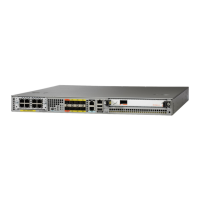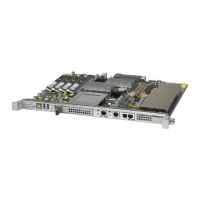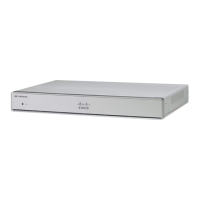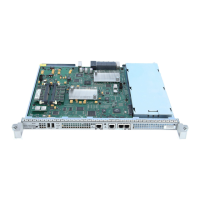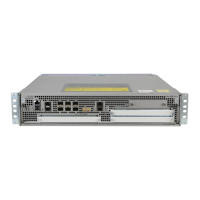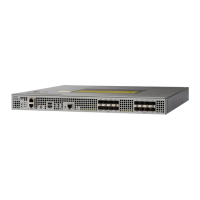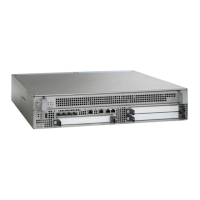16-50
Cisco 10000 Series Router Quality of Service Configuration Guide
OL-7433-09
Chapter 16 Fragmenting and Interleaving Real-Time and Nonreal-Time Packets
FRF.12 Fragmentation
Router(config-fr-dlci)# frame-relay class lfi_map_class
!
Router(config)# interface serial 5/0/0/1:0.2 point-to-point
Router(config-subif)# ip address 192.168.2.1 255.255.255.0
Router(config-subif)# no ip directed-broadcast
Router(config-subif)# frame-relay interface-dlci 18
Attaching a Map Class to a Frame Relay Interface and a Service Policy to a Subinterface
To attach a map class to a Frame Relay interface and a service policy to a subinterface, enter the
following commands beginning in global configuration mode:
Command Purpose
Step 1
Router(config)# interface serial
slot/module/port.T1#:channel
Creates or modifies a serial interface. Enters interface
configuration mode.
Step 2
Router(config-if)# hold-queue length {in |
out}
Limits the size of the IP output queue on an interface. We
recommend that you configure this command on all physical
interfaces.
length is a number that specifies the maximum number of packets
in the queue. Valid values are from 0 to 4096. We recommend
4096 packets for all line cards. By default, the input queue is 75
packets and the output queue is 40 packets.
in specifies the input queue.
out specifies the output queue.
Step 3
Router(config-if)# no ip address
Removes any existing IP address from the main interface.
Step 4
Router(config-if)# no ip
directed-broadcast
Disables the translation of a directed broadcast to physical
broadcasts. Instead, the directed broadcasts are dropped.
Step 5
Router(config-if)# encapsulation
frame-relay [ietf | cisco]
Specifies Frame Relay as the interface encapsulation type.
(Optional) ietf sets the encapsulation method to comply with the
Internet Engineering Task Force (IETF) standard (RFC 1490).
Use this keyword when connecting to another vendor’s equipment
across a Frame Relay network.
(Optional) cisco indicates to use Cisco’s own encapsulation,
which is a 4-byte header, with 2 bytes to identify the data-link
connection identifier (DLCI) and 2 bytes to identify the packet
type. This is the default encapsulation type.
Step 6
Router(config-if)# frame-relay class name
Associates a map class with the main interface.
name is the name of the map class.
Note The router applies the service policy configured in the
map class to this interface, its subinterfaces, and any
DLCIs configured on the main interface and its
subinterfaces.
Step 7
Router(config-if)# interface serial
slot/module/port.T1#:channel.subinterface-
number [point-to-point]
Creates or modifies a serial subinterface. Enters subinterface
configuration mode.
The point-to-point subinterface is used to establish a PVC
connection to an interface on the remote end of the Frame Relay
connection.

